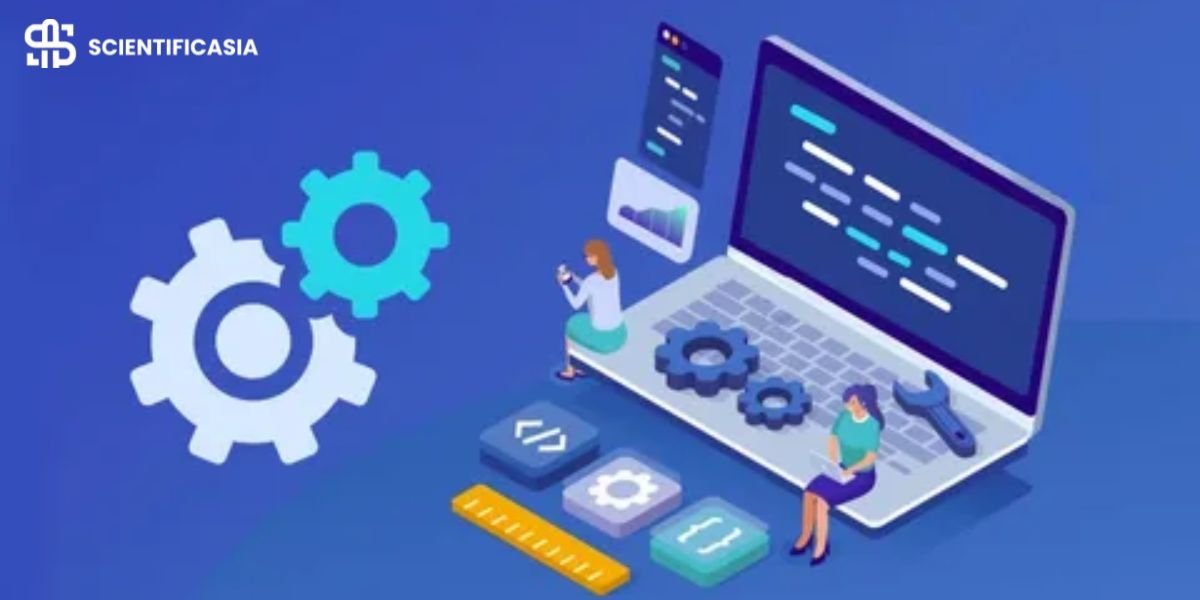When your essential business software, like llekomiss, hits a roadblock, it’s more than an inconvenience—it’s a productivity crisis. You’re not alone. In the complex world of enterprise applications, technical issues are a universal challenge. In fact, studies show that technical issues are a top reason for project delays and budget overruns in software implementation.
This comprehensive blog will provide a diagnostic guide for the solutions to conquer the most common problems on llekomiss software. From simple lag to critical data failures, we’ll equip you with the knowledge to troubleshoot like a professional.
What’s Llekomiss Software For?
While llekomiss is a specific term, it generally refers to a comprehensive enterprise application, likely handling complex functions such as Enterprise Resource Planning (ERP), Learning Management (LMS), or specialized data management. Because these systems touch many parts of an organization, a problem in one area can cascade, making proactive troubleshooting essential.
How does it work?
Llekomiss typically operates through a cloud-based or on-premises system. It integrates multiple modules, such as user authentication, data synchronization, and analytics, to streamline operations. Because it handles large datasets and multiple integrations, performance and compatibility become key considerations.
System Requirements
Before installation, ensure your system meets these general prerequisites:
- Stable internet connection
- Sufficient RAM and disk space
- Updated OS and drivers
- Compatible third-party integrations
Failing to meet these requirements often leads to installation or performance issues.
Diagnostic Methodology for The Problems on Llekomiss Software
Before jumping to complex solutions, a structured diagnostic approach can resolve over 60% of common user complaints. Start simple and work your way up.
Initial Diagnostic Steps
Always begin with these fundamental checks:
- Check System Compatibility: Ensure your operating system (OS), RAM, and CPU meet the current minimum requirements for your Llekomiss version.
- The Power Cycle: Close the LLEKOMISS application completely, restart your computer, and then relaunch the software. This clears temporary memory conflicts.
- Verify Connectivity: If Llekomiss is cloud-based, confirm your network is stable and that no firewall or proxy is blocking communication with the server.
Effective Troubleshooting Method
If the quick fixes fail, it’s time for a progressive approach. This involves isolating the problem to a specific area (e.g., performance, data, or login). For complex issues, learning how to interpret llekomiss error log files (typically found in the application data folder) is invaluable for advanced support.
Pro Tip: Always document the steps you take while troubleshooting — it helps both you and support teams resolve issues faster.
Common Problems with Llekomiss Software and Their Solutions
Installation and Setup Failures
Installation issues are among the most frequently reported problems. These can include corrupted downloads, insufficient system permissions, or missing prerequisites such as specific DLL files. Errors like “error code 404,” installation freezes at 87%, or permission denied issues on Windows are common.
Solutions: Run the setup file as an administrator, temporarily disable antivirus software, and verify that all prerequisite frameworks (like .NET or Java) are installed. Re-download the installer from a verified source to avoid corrupted files.
Performance Issues and System Slowdowns
Users may notice excessive memory consumption, CPU bottlenecks, and delayed report generation. These performance issues can stem from outdated software patches, insufficient system resources, or corrupted cache files.
Solutions: Clear cache and temporary folders regularly, ensure Llekomiss and drivers are up to date, and monitor system resources using Task Manager. For large datasets, increase RAM or allocate more virtual memory to improve performance.
Frequent Crashes and Application Failures
Crashes may occur when memory leaks develop or when the software encounters corrupted data. Keeping the software updated and regularly clearing temporary files can help prevent such failures.
Solutions: Review error logs to identify crash patterns, reinstall the application if files are corrupted, and run the software in a clean boot environment to isolate conflicting background processes.
Authentication and Login Difficulties
Login problems often arise from expired credentials, desynchronized system clocks, or misconfigured authentication settings, such as LDAP or OAuth.
Solutions: Reset passwords, synchronize system clocks with NTP servers, and verify that authentication protocols are correctly configured. Clearing browser cache (for cloud versions) may also restore access.
Data Synchronization Failures
Llekomiss users who rely on data synchronization across servers or cloud systems may experience delays or replication conflicts. Causes include unstable network connections, version mismatches, or sync service interruptions.
Solutions: Restart synchronization services, check network stability, and ensure both client and server software versions match. Regular backups help maintain data integrity during manual sync.
Integration and Compatibility Conflicts
Conflicts with third-party applications or new operating system versions can lead to data transfer errors or broken interfaces.
Solutions: Conduct thorough integration testing before updates, keep integration APIs current, and temporarily disable non-critical plugins to isolate conflicts. Update related software components as necessary.
User Interface Navigation Problems
Navigation can feel unreliable at times, with menu items disappearing, dropdowns freezing, or buttons becoming unresponsive. These usability glitches often relate to UI bugs or rendering inconsistencies across different screen resolutions.
Solutions: Adjust display scaling, update graphics drivers, and apply official patches. Reporting UI issues to the vendor can help improve interface stability over time.
Security Vulnerabilities and Data Protection
Security risks include unauthorized access, firewall restrictions blocking necessary connections, and outdated patches creating vulnerabilities.
Solutions: Apply official security updates promptly, configure firewall exceptions for trusted connections, and perform routine security audits. Restrict administrative privileges to verified users only.
Course Management and Content Upload Issues
Some users face challenges uploading content or managing courses effectively. Limits on file size or execution time can cause upload failures.
Solutions: Compress large files before uploading, increase timeout limits if possible, and ensure supported file formats are used. Maintain sufficient server storage to avoid interruptions.
Pro Tip: Schedule routine backups and sync checks during low-traffic hours to prevent data loss and improve software performance.
When to Contact Professional Support to Fix the Problems
Knowing when to escalate saves time and prevents irreversible data damage.
Situations Requiring Professional Help
You should immediately contact support if you encounter:
- Unexplained data corruption across multiple modules.
- System-wide outages or server failures.
- Security breaches or unauthorized access warnings.
Preparing the Perfect Support Ticket
Maximize your response time by providing all necessary details:
- The exact steps taken before the error occurred (Steps to Reproduce).
- The full error message or code.
- Screenshots and, crucially, the relevant llekomiss error log file.
Comprehensive Solutions and Best Practices for the Future
- Fixing Authentication Problems: Use password managers and official recovery options.
- Resolving Sync Failures: Schedule synchronization during low-traffic hours.
- Optimizing Content Management: Compress large files before upload to improve speed.
- Enhancing Performance: Regularly defragment your system and update hardware drivers.
Frequently Asked Questions
What causes most problems on Llekomiss software?
Usually, compatibility issues, outdated software, or network interruptions.
Is it safe to reinstall Llekomiss?
Yes, as long as you back up your data and download from the official website.
Why does Llekomiss slow down over time?
Cache buildup and memory leaks often cause gradual slowdowns.
Can I fix synchronization issues manually?
Yes, by checking your connection, retrying sync, and ensuring both sides use compatible versions.
Does Llekomiss provide customer support?
Yes, users can access email or live chat support through the official Llekomiss help center.
Conclusion
Software issues are inevitable, but with the right knowledge, most problems on Llekomiss software can be resolved quickly. Regular updates, data backups, and system monitoring can prevent 80% of common errors before they happen. If you’ve encountered persistent issues despite following these steps, reach out to official Llekomiss support for advanced assistance.














